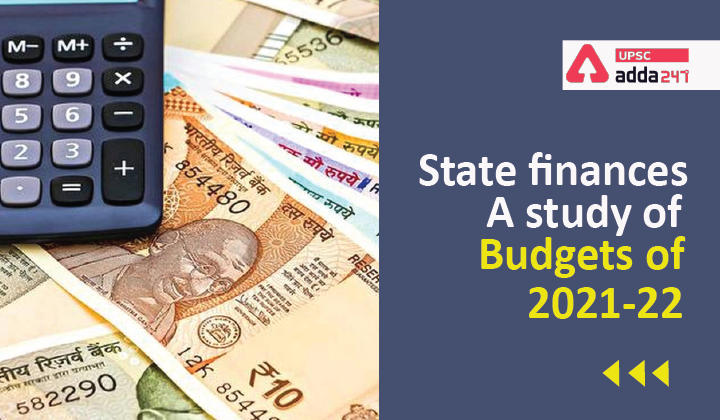Table of Contents
State finances a study of budgets: Relevance
- GS 3: Indian Economy and issues relating to planning, mobilization, of resources, growth, development and employment.
State finances a study of budgets: Context
- Recently, RBI has released its annual publication titled ‘State Finances: A Study of Budgets of 2021-22’ and stated that states debt-to-GDP ratio worryingly higher than FY23 target.
State finances a study of budgets: Key findings
- The combined debt-to-GDP ratio of states is expected to remain at 31% by end-March 2022 which is worryingly higher than the target of 20%, which is to be achieved by 2022-23.
- The report also stated that as the impact of the second COVID-19 wave wanes, state governments need to take credible steps to address debt sustainability concerns.
- The report also noted that the budgeted consolidated gross fiscal deficit (GFD) of 3.7 per cent of GDP for states for the year 2021-22 is lower than the 4 per cent level as recommended by the FC-XV (15th Finance Commission), which reflect the state governments’ intent towards fiscal consolidation.
- 15th Finance Commission, in view of the pandemic induced slowdown, projected the debt-GDP ratio to peak at 33.3 per cent in 2022-23 (in view of the higher deficits in 2020-21, 2021-22 and 2022-23), and gradually decline thereafter to reach 32.5 per cent by 2025-26.
- To partially offset the revenue shortfall, states hiked their duties on petrol, diesel and to make room for higher expenditure on healthcare and social services.
State finances a study of budgets: Reforms in power sector
- In the medium term, improvements in the fiscal position of state governments will hinge upon the following reforms in the power sector as recommended by FC-XV and specified by the Centre.
- Creating transparent and hassle-free provision of power subsidy to farmers;
- Preventing leakages; and
- Improving the health of the power distribution companies (DISCOMs) by alleviating their liquidity stress in a sustainable manner.
- Timely payments of state dues to DISCOMS and, in turn, by them to Generation Companies (GENCOS) hold the key to the sector’s financial health.
- The report acknowledged that undertaking power sector reforms will not only facilitate additional borrowings of 0.25 per cent of GSDP (Gross State Domestic Product) by the states but also reduce their contingent liabilities due to improvement in financial health of the DISCOMs.
- The report has also highlighted that the impact of the second wave on state finances is likely to be less severe than the first wave due to less stringent and localised restrictions imposed this time as opposed to the nationwide lockdown during the first wave of COVID-19.
Also Read:



 TSPSC Group 1 Question Paper 2024, Downl...
TSPSC Group 1 Question Paper 2024, Downl...
 TSPSC Group 1 Answer key 2024 Out, Downl...
TSPSC Group 1 Answer key 2024 Out, Downl...
 Cabinet Ministers of India 2024, New Cab...
Cabinet Ministers of India 2024, New Cab...







